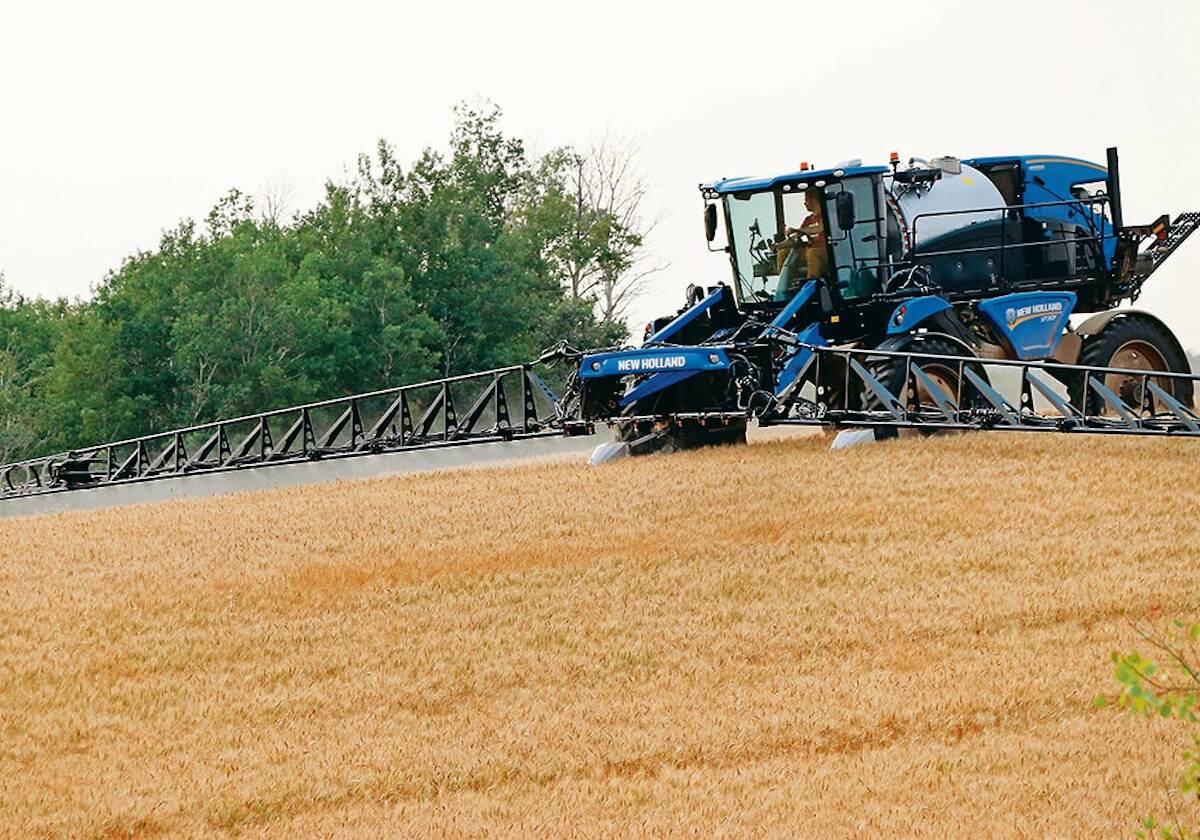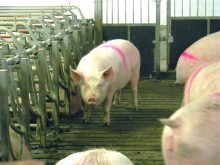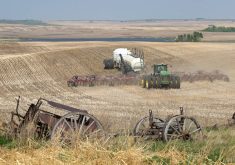It seems nearly everyone has a cellphone these days; but although they are useful tools, cellphones have limitations when it comes to communication between machinery operators in farm fields. Unloading from a moving combine is one example of where cellphones can fall short.
“The immediacy of cellular communication isn’t fast enough (for jobs such as that),” says Cameron Milne, regional manager for Prairie Mobile Communications. Making a phone call to co-ordinate operations in the field often isn’t practical. He believes relaying messages instantly is best done with two-way radios.
Read Also

Farming still has digital walls to scale
Canadian farms still face the same obstacles to adopting digital agriculture technology, despite the years industry and policy makers have had to break them down.
Milne’s company specializes in providing a wide variety of communications options, including UHF (ultra high frequency) and VHF (very high frequency) radios. He says these radios also offer other advantages over cellphones for farm operations. Frequent calls can use up free airtime allotments very quickly, particularly during peak seasons. And the typical 14-hour shifts spent in the field means cellphone batteries may not last the whole day, causing communication to break down just when it’s needed most.
To set up a UHF or VHF radio system, a licence is required from Industry Canada, a branch of the federal government, for a dedicated frequency channel. According to Milne, there is usually a separation of at least 100 miles between farms or businesses allotted the same channel. But as the popularity of two-way radios rises, he has seen competition for channels increase, too.
Michael Hammond, a communications adviser at Industry Canada, says the number of available channels varies depending on the location of the base station. “If it is located in an area of high frequency use, a shared channel may be all that is available,” he says.
The annual fees for radio licences are $106 for a base station and $41 for each mobile. Hammond recommends taking a look at Industry Canada’s website, www.ic.gc.ca,for more detailed information.
MAXIMIZING RECEPTION
Once farmers set up a UHF or VHF system, they can expect an effective working range that is typically 15 to 25 miles. “Some systems have a 40-to 50-mile range, but that’s the exception rather than the norm,” Milne says.
However, the higher the tower used for a base station antenna, the greater the range. “Height equals range; it’s as simple as that,” he adds.
Although the local terrain and even weather can also play a role in determining radio range, proper installation of radio sets in vehicles and equipment is the most important factor; that is especially true when it comes to selecting the right antenna for each application. “Getting the right antenna for the right vehicle, that’s the critical issue,” says Milne.
Installing a radio in a vehicle is still a simple procedure for anyone used to doing a little backyard mechanical work, But for those who would rather leave that chore to the pros, many dealers provide field installation services, something that’s especially helpful when it comes to installing radios in farm equipment.
Between the two frequencies, VHF performs better in rural areas. “VHF tends to provide much better range on open, flat ground,” says Milne. Despite that advantage, producers may need to opt for UHF if they are using equipment with GPS auto steer. VHF radios and GPS receivers use similar signals which can interfere with each other. “If you’re using auto steer, I would recommend UHF,” he says.
For anyone looking to purchase a radio system, Milne offers some advice, “Look for a relatively well-known brand name.” Even radios offered by the major manufacturers are available at reasonable prices. “You don’t need to spend a huge amount of money,” he adds. Lastly, purchasing from a dealer who can service the equipment he sells will keep your radios, and you, working at peak efficiency.



















